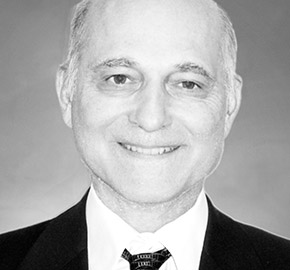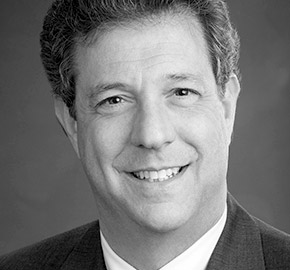A message from our board chair

HEALTHeLINK is much more than a data repository. It provides solutions to many of the issues we as providers face in a changing health care environment.
The foundation of quality health care is the patient history and physical exam. The Achilles’ heel of quality care to date has been the lack of a complete and accurate history that accompanies the patient at all points of care. The consequences are inefficient care, delayed triage, and duplicate testing. As a pathologist, I often am faced with a poorly differentiated lesion on a biopsy with an incomplete history. I can be much more efficient if I have the patient’s previous biopsy reports and the most recent PET scan. Chronic illness can devastate a patient and a health care system. Lack of patient history is the chronic illness devastating health care delivery. HEALTHeLINK is the cure for that illness, by offering participating providers secure access to the most current information on the patients they are treating.
Second, our payment system and our quality metrics have changed. Up to now we have been paid and judged largely on single patient encounters in our offices. Now with bundled payments, we will be paid and judged on what also happens to our patient outside our office. When that patient goes to an emergency room or to a specialist, the quality and efficiency of that encounter will circle back to everyone involved. Therefore, it is imperative that we make a complete and accurate history of the patient available at all times. This can be accomplished by obtaining a HEALTHeLINK consent from all your patients and accessing the exchange within your office to ensure quality and cost-effective care.
Lastly, HEALTHeLINK is not an IT vendor. Its purpose is to maximize the use of the system to benefit patients and providers, not to sell a license and collect a maintenance fee. HEALTHeLINK has a strong culture of putting the provider in a prominent place to drive the functionality of the system. HEALTHeLINK’s success is measured in how much the system is used, which is determined by how useful the information is and how easy it is to access.
HEALTHeLINK is working to improve our health care system. Continue to utilize HEALTHeLINK and provide your feedback on what we can do to make it even better. We also encourage you to ensure all your patients are consented.
Read more
Show less
David Scamurra, MD
Chair, HEALTHeLINK Board of Directors
Pathologist, Eastern Great Lakes Pathology/X-Cell Laboratories of WNY
A message from our executive director.

More than ever, HEALTHeLINK is working in Western New York. In 2015, physician access to patients’ data increased significantly along with our ability to measure HEALTHeLINK’s impact.
We conducted a study on the impact of HEALTHeLINK utilization within three local emergency departments. The study illustrated that, when used regularly, the exchange of health information does significantly reduce the number of unnecessary laboratory tests and radiology exams ordered.
While direct and indirect costs of unnecessary tests and exams can vary by hospital and region, we found that when pertinent clinical information is made available to physicians through HEALTHeLINK, unnecessary tests and exams can be eliminated and cost savings are realized. More importantly, eliminating the unnecessary tests allows patients to avoid what can be painful, time-consuming, and, in some cases, dangerous procedures. We are currently working with provider organizations to bring in data from their electronic medical record systems at the close of patient encounters, which will enable us to make an even deeper and richer data set available to the patients’ other treating doctors.
In response to changing technologies and feedback from our participants on how the clinical exchange can be enhanced, HEALTHeLINK migrated to a new state-of-the-art technology platform. Not only does this platform improve the overall ease of use for our participants, our suite of products expands quality improvement efforts and reporting requirements. We are now in a position to be a trusted data source for such quality assessment programs in the community as Healthcare Effectiveness Data and Information Set (HEDIS) and other quality improvement initiatives taking place in our continually evolving health care system such as the Delivery System Reform Incentive Payment (DSRIP) program.
Our ability to support care coordination and care transitions is improved by our expanded capability to deliver alert notifications to the patients’ doctors on events such as hospital admissions, hospital discharges, and emergency room visits. We will continue to expand on these alert capabilities.
HEALTHeLINK is also enhancing the value we provide to Western New York’s providers through our connection to the Statewide Health Information Network of New York (SHIN-NY). This year, the state’s eight regional health information organizations connected their systems and are enabling access to patient data for treatment purposes from anywhere across the state. Through this SHIN-NY connection and with their patients’ consent, providers can obtain a more complete medical picture on the patients they are treating if they have been seen by physicians outside Western New York.
While HEALTHeLINK is working better than ever, in order for us to reach our full potential in improving the quality of patient care, enhancing patient safety, and minimizing health care costs, we need full participation from the Western New York community. This means all physicians and health care organizations regularly utilizing HEALTHeLINK in the course of their daily workflow.
However, providers can access this clinical information only if patients have provided their consent. While more than 770,000 Western New Yorkers have already filled out a consent form, there are still thousands more who have not. Physician adoption and patient consent remain as important to our efforts as ever, and we continue to explore ways to make our system better and easier to use for doctors and their staff.
I am very fortunate to work with an incredibly dedicated and talented staff who share a passion for our work. We as an organization are also fortunate to have the continued support of the Western New York health care community and New York State. A special thank-you goes to all of the providers, data sources, and patients who already are part of HEALTHeLINK. To those who are not yet participating, we encourage you to take a closer look as we continue our work in 2016. HEALTHeLINK is working better and more than ever!
Read more
Show less
Daniel E. Porreca
Executive Director, HEALTHeLINK
Our Board of Directors.
David Scamurra, MD – Chair
Pathologist
Eastern Great Lakes Pathology/
X-Cell Laboratories of WNY
Art Wingerter – Vice Chair
President
Univera Healthcare
Anthony J. Billittier, MD, FACEP
Emergency Physician, UBMD – Emergency Medicine
Chief Medical Officer, Millennium Collaborative Care
Michael Cain, MD
Vice President, Health Sciences
Dean, School of Medicine & Biomedical Sciences
University at Buffalo
Michael W. Cropp, MD
President & CEO
Independent Health Association
Michael F. Galang, DO
Senior Vice President & Chief Information Officer
Catholic Health System
Kenneth Oakley, PhD
Retired CEO
Rural Area Health Education Center
Ann Marie Odrobina
Administrative Vice President
Manager, Employee Benefits Administration
M&T Bank
Thomas Quatroche, PhD
President & CEO
Erie County Medical Center
Jonathan Swiatkowski
Executive Vice President & CFO
Kaleida Health
Stephen Swift
Executive Vice President & CFO
HealthNow New York, Inc.
Everett Weiss, MD
Chief Medical Informatics Officer
Roswell Park Cancer Institute

